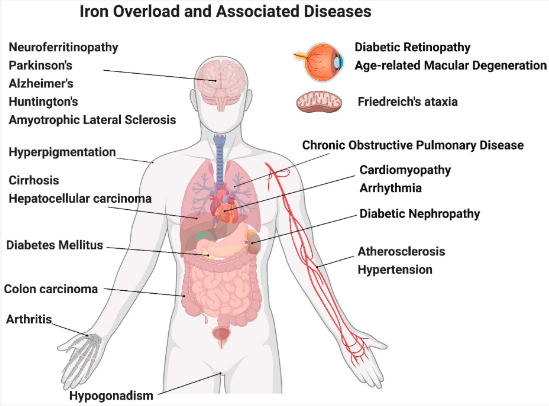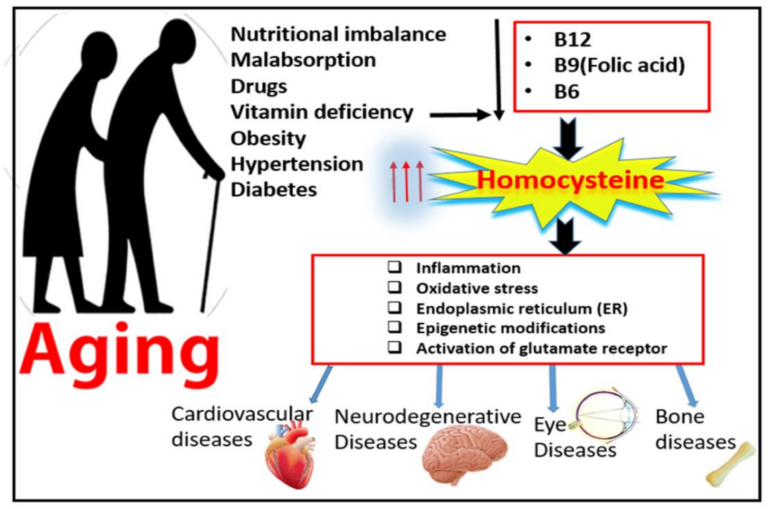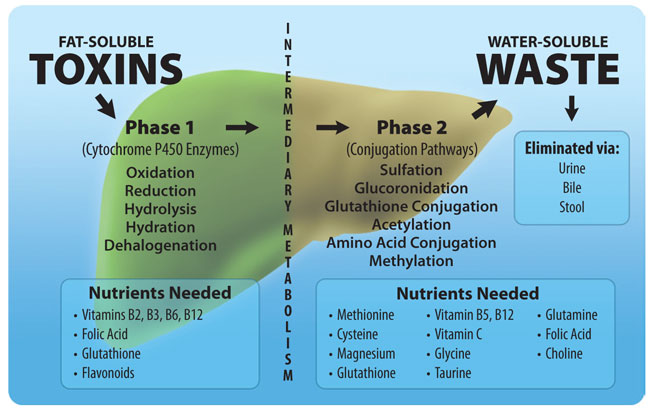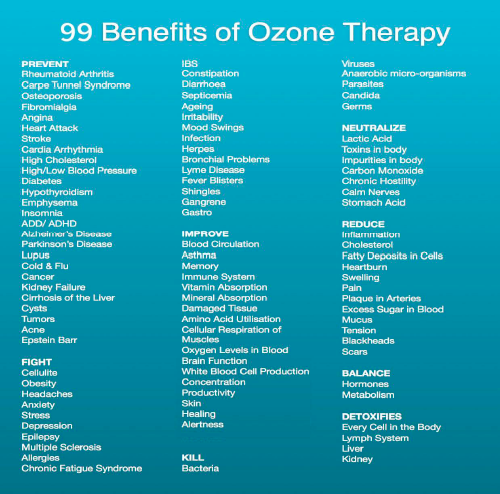
Treatment and Avoidance of Toxins to Improve Health and Wellbeing
The modern world exposes us to a wide range of toxins in the environment and the food we consume. These toxins can have a significant impact on our health and well-being. It is crucial for individuals to understand the sources of these toxins and adopt strategies to minimize exposure and support the body's natural detoxification processes. This article provides an in-depth discussion on avoiding toxins in the environment and food, along with the importance of maintaining good gut health.
II. Avoiding Toxins in the Environment
Toxins are ubiquitous in the environment, and exposure can come from various sources, such as air pollution, contaminated water, household cleaners, and personal care products. Understanding these common environmental toxins and adopting strategies to minimize exposure is essential for maintaining good health.
Explanation of common environmental toxins
- Air pollutants: Particulate matter, ozone, nitrogen dioxide, and volatile organic compounds (VOCs) are common air pollutants that can contribute to respiratory problems, heart disease, and other health issues.
- Heavy metals: Lead, mercury, and cadmium are harmful heavy metals that can accumulate in the body and cause neurological damage, kidney problems, and other health issues.
- Pesticides: Chemicals used to control pests can contaminate soil, water, and air, leading to exposure through inhalation, ingestion, or direct contact with the skin.
- Endocrine disruptors: These are chemicals that interfere with the hormonal system, potentially causing reproductive issues, developmental problems, and other health concerns. Common endocrine disruptors include bisphenol A (BPA), phthalates, and parabens.
Strategies for avoiding environmental toxins
- Using HEPA air filters: High-efficiency particulate air (HEPA) filters can remove particles and pollutants from indoor air, reducing exposure to allergens and harmful chemicals.
- Choosing non-toxic household cleaners and personal care products: Opt for products made with natural ingredients and free of harmful chemicals to minimize exposure to endocrine disruptors and other toxins.
- Reducing exposure to outdoor pollutants: Limit outdoor activities during times of high air pollution, and close windows to prevent outdoor pollutants from entering the home.
- Purifying drinking water through distillation or reverse osmosis: These methods can remove contaminants, such as heavy metals and pesticides, from drinking water.
- Reducing exposure to electromagnetic fields (EMFs): Limit the use of electronic devices and maintain a distance from power lines and electrical appliances to reduce EMF exposure.
Avoiding Toxins in Foods
The food we consume can also be a significant source of toxins. It is crucial to understand common foodborne toxins and adopt strategies to minimize exposure and support overall health.
Explanation of common toxins found in food
- Pesticides: Chemicals used in agriculture can contaminate food and contribute to various health issues, such as hormonal imbalances and neurological problems.
- Heavy metals: Fish and other seafood can contain high levels of mercury, which can accumulate in the body and cause neurological damage. Some crops can also accumulate heavy metals from contaminated soil or water.
- Food additives: Artificial colors, flavors, and preservatives found in processed foods can cause allergic reactions, digestive issues, and other health problems.
- Acrylamide: A chemical formed during high-temperature cooking processes, such as frying or baking, which has been linked to an increased risk of cancer.
Strategies for avoiding food toxins
- Choosing organic, non-GMO whole foods: Organic and non-GMO foods are produced without synthetic pesticides, herbicides, and genetically modified organisms, reducing the risk of toxin exposure.
- Avoiding foods with high levels of pesticides or heavy metals: Opt for fruits and vegetables with low pesticide residues, such as those listed on the Environmental Working Group's "Clean Fifteen" list. Choose seafood low in mercury, such as wild-caught salmon or sardines.
- Cooking with non-toxic cookware: Use cookware made from materials like cast iron, stainless steel, or ceramic to avoid the release of harmful chemicals during cooking.
- Filtering drinking water: Use water filters to remove contaminants, such as heavy metals, pesticides, and other harmful substances, from your drinking water.Minimizing consumption of processed foods: Processed foods often contain artificial additives and preservatives, which can contribute to toxin exposure. Opt for whole foods and prepare meals at home to minimize exposure to these additives.
- Avoiding foods with high levels of pesticides or heavy metals: Opt for fruits and vegetables with low pesticide residues, such as those listed on the Environmental Working Group's "Clean Fifteen" list. Choose seafood low in mercury, such as wild-caught salmon or sardines.
- Cooking with non-toxic cookware: Use cookware made from materials like cast iron, stainless steel, or ceramic to avoid the release of harmful chemicals during cooking.
- Filtering drinking water: Use water filters to remove contaminants, such as heavy metals, pesticides, and other harmful substances, from your drinking water.
Importance of Gut Health
The gut plays a crucial role in detoxification and overall health. A healthy gut can help the body process and eliminate toxins more efficiently, reducing their potential harmful effects.
Explanation of the role of the gut in detoxification
- Bacterial breakdown: The gut microbiome, comprising trillions of bacteria, can break down and metabolize various toxins, including heavy metals and pesticides.
- Immune support: Approximately 70% of the immune system is located in the gut, and a healthy gut can support the immune system in identifying and neutralizing harmful substances.
- Elimination: The gut is responsible for the elimination of waste and toxins through the digestive system, ensuring they are excreted from the body.
Strategies for supporting gut health
- Consuming fermented foods: Foods like yogurt, kefir, sauerkraut, and kimchi contain beneficial bacteria that can help maintain a healthy gut microbiome.
- Taking probiotics and prebiotics: Probiotic supplements introduce beneficial bacteria into the gut, while prebiotic supplements provide the necessary nutrients to support the growth of these bacteria.
- Eating a high-fiber diet: A diet rich in fiber from fruits, vegetables, whole grains, and legumes can support gut health by promoting regular bowel movements and feeding beneficial bacteria.
- Reducing stress levels: Chronic stress can negatively impact the gut microbiome and contribute to inflammation. Incorporating stress-reduction techniques, such as meditation, yoga, or deep breathing exercises, can help support gut health.
Dry Saunas and Detoxification
Dry saunas have been used for centuries to promote relaxation, reduce stress, and support overall health. In recent years, scientific research has revealed that regular sauna use can have various physiological benefits, including the activation of heat shock proteins, detoxification, and potentially even reducing the risk of dementia.
How Dry Saunas Work
Dry saunas use heated rocks or a heater to produce high temperatures and low humidity, typically around 180°F (80°C) and 10% to 20% humidity. The heat causes the body's core temperature to rise, leading to increased circulation, perspiration, and a range of physiological effects.
Using Dry Saunas
To maximize the benefits of dry saunas, follow these guidelines:
- Start slow: Begin with shorter sessions of 5 to 10 minutes, gradually increasing the duration as you become more accustomed to the heat.
- Stay hydrated: Drink plenty of water before, during, and after your sauna session to compensate for the fluids lost through sweating.
- Cool down: Allow your body to cool down gradually after a sauna session, either by sitting in a cooler room or taking a cool shower.
- Frequency: Aim for 2 to 4 sessions per week, depending on your personal preferences and tolerance to heat.
Physiological Effects and Benefits
-
- Heat shock proteins: Exposure to heat stress activates heat shock proteins (HSPs), which are involved in cellular repair and protection. HSPs help to maintain protein stability and prevent the aggregation of misfolded proteins, which can lead to cellular damage and various health issues.
- Toxin removal: Sweating during a sauna session can help to eliminate toxins from the body, including heavy metals and other environmental pollutants. This process may support the body's natural detoxification pathways and promote overall health.
- Dementia prevention: Some studies have suggested a link between regular sauna use and a reduced risk of dementia. The activation of HSPs and improved blood circulation are thought to contribute to this protective effect, as they can help maintain brain health and function.
- Other benefits: Regular sauna use has also been associated with a range of additional health benefits, such as reduced inflammation, improved cardiovascular health, and enhanced relaxation and stress relief.
Ozone Therapy and Detoxification
Ozone therapy is a form of alternative medicine that utilizes ozone gas (O3) for its potential therapeutic effects. Proponents of ozone therapy claim that it can provide numerous health benefits, such as increased energy production, elimination of infectious organisms, stimulation of the antioxidant system, and alleviation of fatigue, aging, and toxin accumulation. This section will discuss how ozone therapy works, its physiological effects, and how to use it.
How Ozone Therapy Works
Ozone is a molecule consisting of three oxygen atoms, which makes it highly reactive and unstable compared to the more common molecular oxygen (O2). When introduced into the body, ozone reacts with various molecules, leading to a range of physiological effects. Ozone therapy can be administered in several ways, such as through ozonated water, ozone insufflation, or intravenous ozone administration.
Using Ozone Therapy
It's essential to consult with a qualified healthcare professional before undergoing ozone therapy, as the treatment method and duration may vary depending on individual needs and specific health conditions. A healthcare professional will determine the appropriate ozone concentration, administration method, and treatment frequency based on your medical history and goals.
Physiological Effects and Benefits
- Energy production: Ozone therapy may help enhance energy production by improving oxygen delivery to cells and supporting mitochondrial function. This increased cellular energy may lead to improved overall health, reduced fatigue, and enhanced vitality.
- Destruction of infectious organisms: Ozone has been shown to possess antimicrobial properties, making it effective against various pathogens, including bacteria, viruses, fungi, and parasites. Ozone therapy may help eliminate harmful microorganisms in the colon, blood, and liver, thereby supporting the immune system and reducing the risk of infections.
- Stimulation of the antioxidant system: Ozone therapy can induce the production of antioxidant enzymes, which play a crucial role in neutralizing free radicals and reducing oxidative stress. This process may help protect cells from damage, slow down the aging process, and support overall health.
- Toxin removal: By improving circulation, oxygen delivery, and immune function, ozone therapy may facilitate the elimination of toxins and waste products from the body. This detoxification process can contribute to overall well-being and a healthier internal environment.
Despite its potential benefits, ozone therapy remains a controversial treatment in some circles, particularly in the United States, where the medical community is often more focused on pharmaceutical interventions. This controversy may be attributed to the lack of widespread acceptance of alternative remedies and supplements, rather than a lack of scientific evidence supporting ozone therapy's efficacy.
In recent years, a growing body of research has emerged, highlighting the potential therapeutic effects of ozone therapy. However, it is essential to consult with a qualified healthcare professional and carefully weigh the potential risks and benefits before undergoing ozone therapy. By working closely with a healthcare provider, you can determine the most appropriate treatment approach for your specific needs and health goals. This collaborative approach can help ensure that you receive the best possible care and support for your overall well-being.





